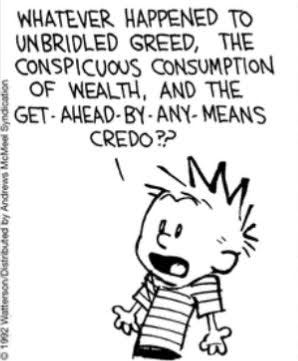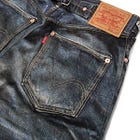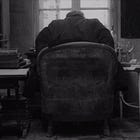Is This Thing On?
Why I started, paid tiers, mediums, mid(?) 20s Luddite fantasies
I don’t know where to write.
I’m looking for a place, with higher stakes than a diary, something more stylish than an empty Google doc, less exhausting than a published article, kinder than a paywall.
At 24 I have no illusions that much of my writing is exploratory, experimental, jagged. I have no brand, no platform, no system of living off my writing. I just have words.
During college, I spent a year studying four fashion shows to compose a thesis on archive fashion, a mostly individual and academic exercise resulting in 50 odd pages, renewed self-confidence, and this Substack. Hi & Lo was an experiment in evolving my voice, in releasing what I didn’t know how to articulate, and in experimentation. I wanted to write in a way that filled the gap of critical study of current yet “archive” fashion, not to fulfill a gap in the market, but because I wanted to for myself.
Out of college, I am asked by a gig economy and capitalist socialization to monetize as much of the creative process as humanly possible. Art “for myself“ holds little value.
The Gen X writers I follow found their positions “the old fashioned way” if not through the discontinued blog era. Millennial/late Gen Z writers I looked up to built platforms on Twitter, Instagram, and YouTube where their personalities and images become fundamental to their success. It is not enough to know how to write. to become a writer, a cultural figure, you must become a social media figure as well. And with such an oversaturated social media landscape, you have to be special, funny, and insightful. You must become a brand. You must develop yourself for consumption.
This is a skill, career, and medium in its own right. It requires constant premeditation of “content“ and an invasive openness to craft a version of self that becomes difficult to change once established. Not every writer can do this, but then not every social media manager can write.
Gradually, I followed more fashion Substackers and gained a follower or two. As more and more people joined to watch what I still mostly considered experiments, I found two things begin to happen: I felt pushed to convince that these were not experimental, but polished works, and I felt encouraged to sell them as a premium service.
I conceded, but reluctantly.
My issue with paywalling my writing isn’t that I think writing shouldn’t be paid for, but it’s the principle of making long-form work automatically inaccessible. Why should I force the ideas I’m most passionate about into hiding and condemn them to relentless optimization?
I see my paid tier as a thank-you tip, an understanding that writing is mostly unpaid labor and that work does not just appear. My “your welcome” to this thank you is an attempt to make my obsessions useful. In other words, I want my writing to only be useful or efficient for a favor. I take pride in the uselessness of art criticism for capitalism.
And yet I must make this writing useful. My public writing becomes the only proof that I can write at all. Posting and ultimately archiving my work on the internet means it is designed to be seen - this is how those who run social media platforms get paid. The reason Substack is so invested in me selling myself is not because of a deep value of paying writers, it’s because they get a cut.
I’m being so difficult because even if I did give in to self branding and buying into online worldbuilding, where would it all lead? My favorite writers and critics on the internet are dumbed down because of the internet, filtered, censored, and forced into petty theatrics and abuse. I saw racist K-pop fans attack a brilliant fashion writer, once articulate and consistently critical voices squeezed into being dressed by brands in return for endless iPhone images of shows we’d already seen on Vogue. It seems using social media to “climb to the top,” to form a career, to create a brand, does not actually offer that much tangible autonomy.
Even when I do everything to avoid savviness and self branding, the very use of mass mediums to share them implicates me. I am folded into the system even in attempted passivity.
And so I am stuck. Left anxious about parading a developing skill in front of the internet panopticon, an endless humiliation ritual that every single artist insists is necessary. Tough love reminds me “get over it.” Write and write again until it is good, if my work isn’t in the world it’s nowhere, and eyes, however critical, will improve it. Romanticism answers that art can be for its own sake, for me alone. I understand why these concepts are right, but it does not help to feel useless, passive, separated from my own process. This sentiment seems to repeat itself in one’s twenties.
I don’t write this piece as a qualification for a lack in quality, but a personal frustration: What is the proper medium for experimenting as a writer? For an Artist?
More than that, is Substack that medium? Is the internet that medium?
I have been weakly preaching to friends and strangers about a hopeful Luddite boom, a return and renaissance of art that costs little to produce, own, or distribute, and is thus physical and local. I’m talking about zines and independent art salons and friends coming together to make things because they need to. It wasn’t until entering the working world that I realized how much I needed art, both my own and that that I experience, to challenge and surprise and disrupt me. What I imagine is a useless Ludditism, one defined by obsession and thus necessity. When climate change begins to disintegrate the pathways that allow globalized art industries to function, they may be all that is left.
Needless to say, people in the fashion industry who I speak to about this are quick to point to its pitfalls for financial stability or longterm success in “the industry.” Not to mention the cliche of it all.
A fashion writer once told me that success does not come quickly, but if you write continuously because you love writing for years, success may come. The in between, he mentioned, is full of technical, sales driven writing, dreck, and at best a community of like minded obsessives.
When I began Hi & Low it was out of excess - an additional written product in spite of the necessary schoolwork, thesis, responsibilities I had. It was genreless, scattered, and born of years long relationships to clothes I didn't know how to articulate. I don’t think this is how I use Hi & Lo now.
I will continue writing here because I would be writing anyway, and I never want to lose a reason to stop writing consistently - even if that reason is a flawed medium. However, I want to lose the pretension that this blog represents a totalized self, a polished expression - it is my laboratory and my treat. In whatever way my work changes here, know it is in the spirit of uselessness, of a joy for clothing and art and film and culture that is not measured in its optimization.
(some early Hi & Lo pieces that I thought about while writing this)
Thanks for reading. I’ll give you some straight ahead fashion week coverage next week, something nice, digestible, and postable.







